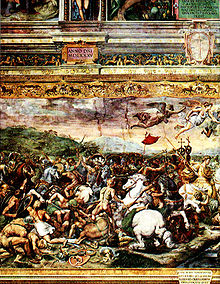
The Constantinian shift was, according to some theologians and historians of antiquity, a set of political and theological changes that took place during the 4th-century under the leadership of Emperor Constantine the Great. Rodney Clapp claims that the shift or change started in the year 200.[1] The term was popularized by the Mennonite theologian John H. Yoder.[2] He claims that the change was not just freedom from persecution but an alliance between the State and the Church that led to a kind of Caesaropapism. The claim that there ever was a Constantinian shift has been disputed; Peter Leithart argues that there was a "brief, ambiguous 'Constantinian moment' in the fourth century", but that there was "no permanent, epochal 'Constantinian shift'".[3]
- ^ Clapp, Rodney (1996). A Peculiar People. InterVarsity Press. p. 23.
What might be called the Constantinian shift began around the year 200 and took more than two hundred years to grow and unfold to full bloom.
- ^ e.g. in Yoder, John H. (1996). "Is There Such a Thing as Being Ready for Another Millennium?". In Miroslav Volf; Carmen Krieg; Thomas Kucharz (eds.). The Future of Theology: Essays in Honor of Jurgen Moltmann. Eerdmanns. p. 65.
The most impressive transitory change underlying our common experience, one that some thought was a permanent lunge forward in salvation history, was the so-called Constantinian shift.
- ^ Peter Leithart, Defending Constantine: The Twilight of an Empire and the Dawn of Christendom, p 287.